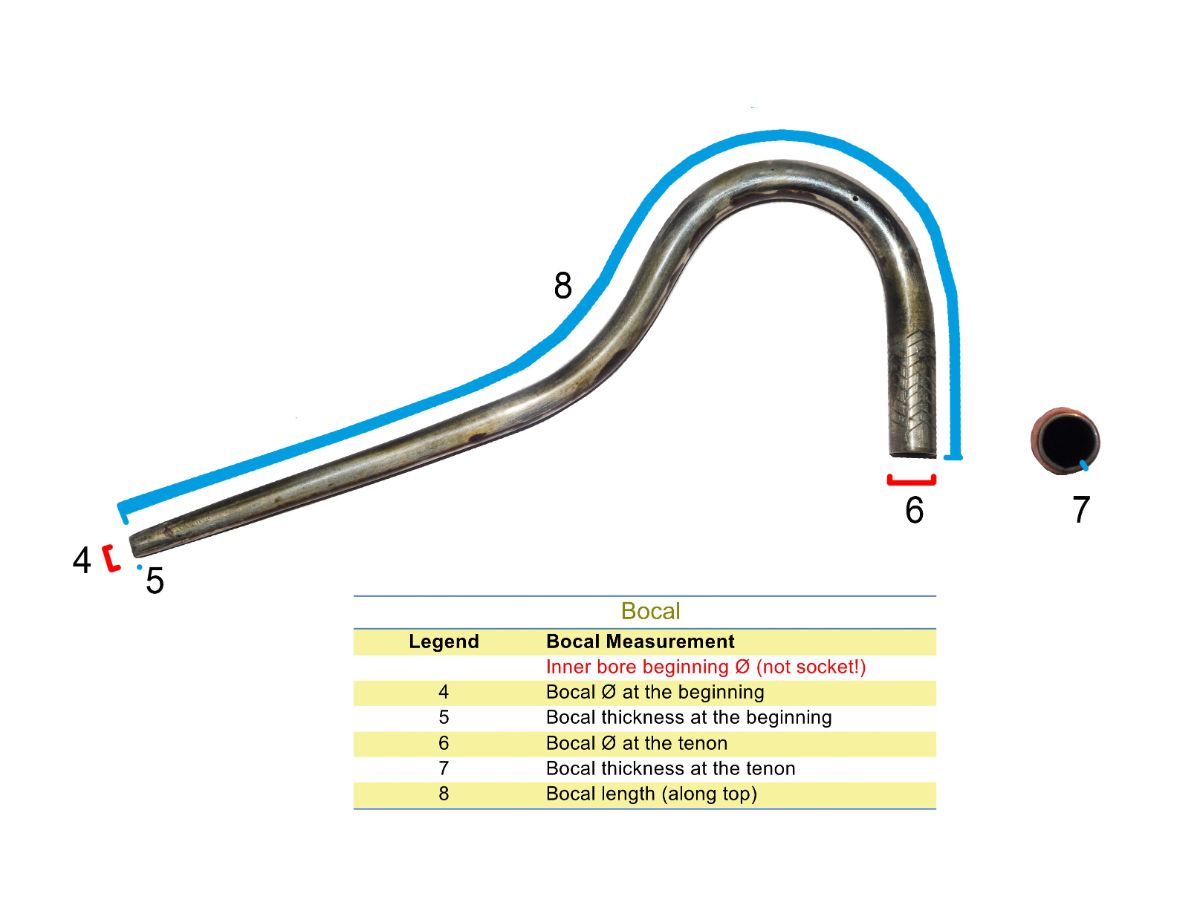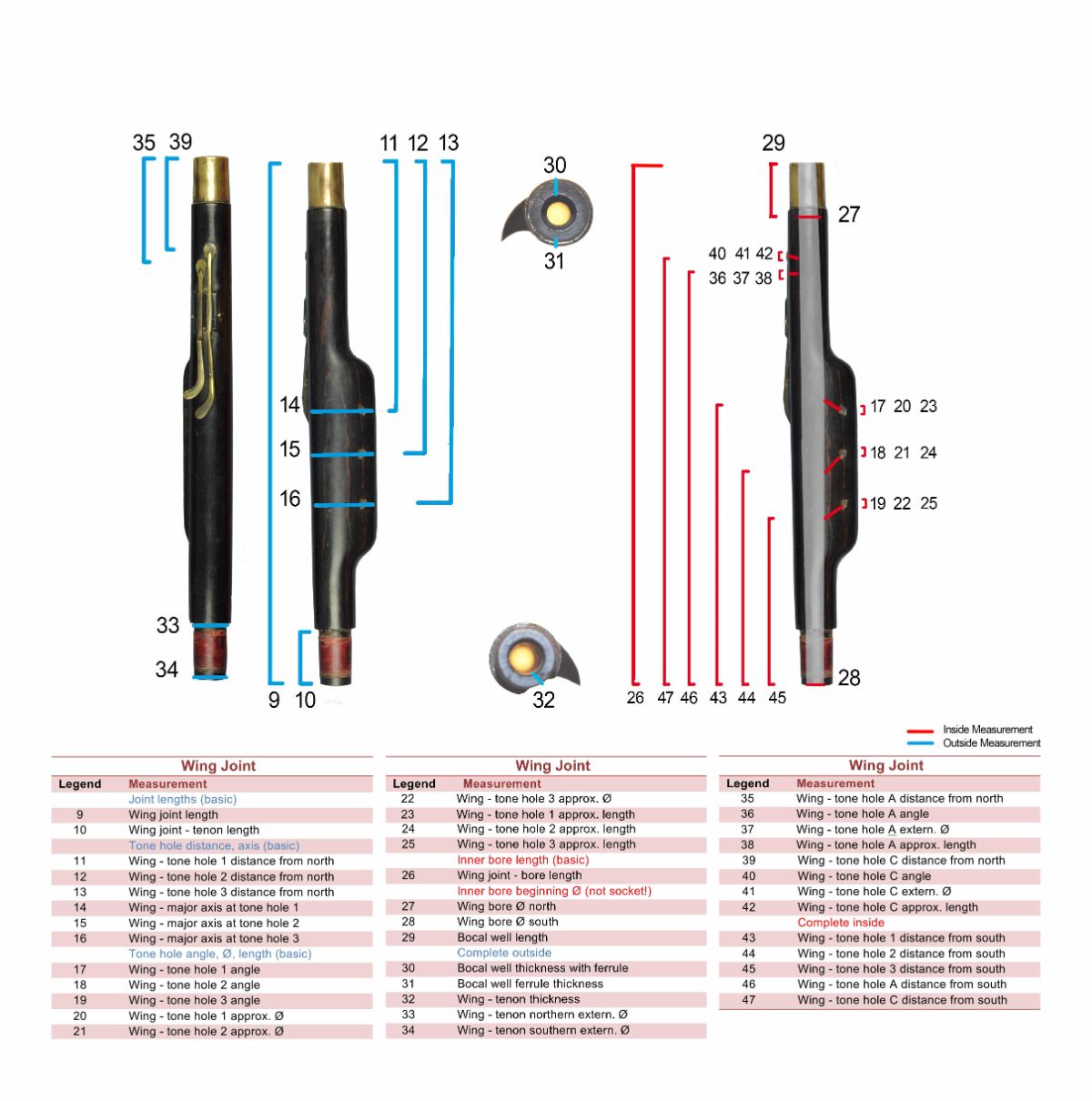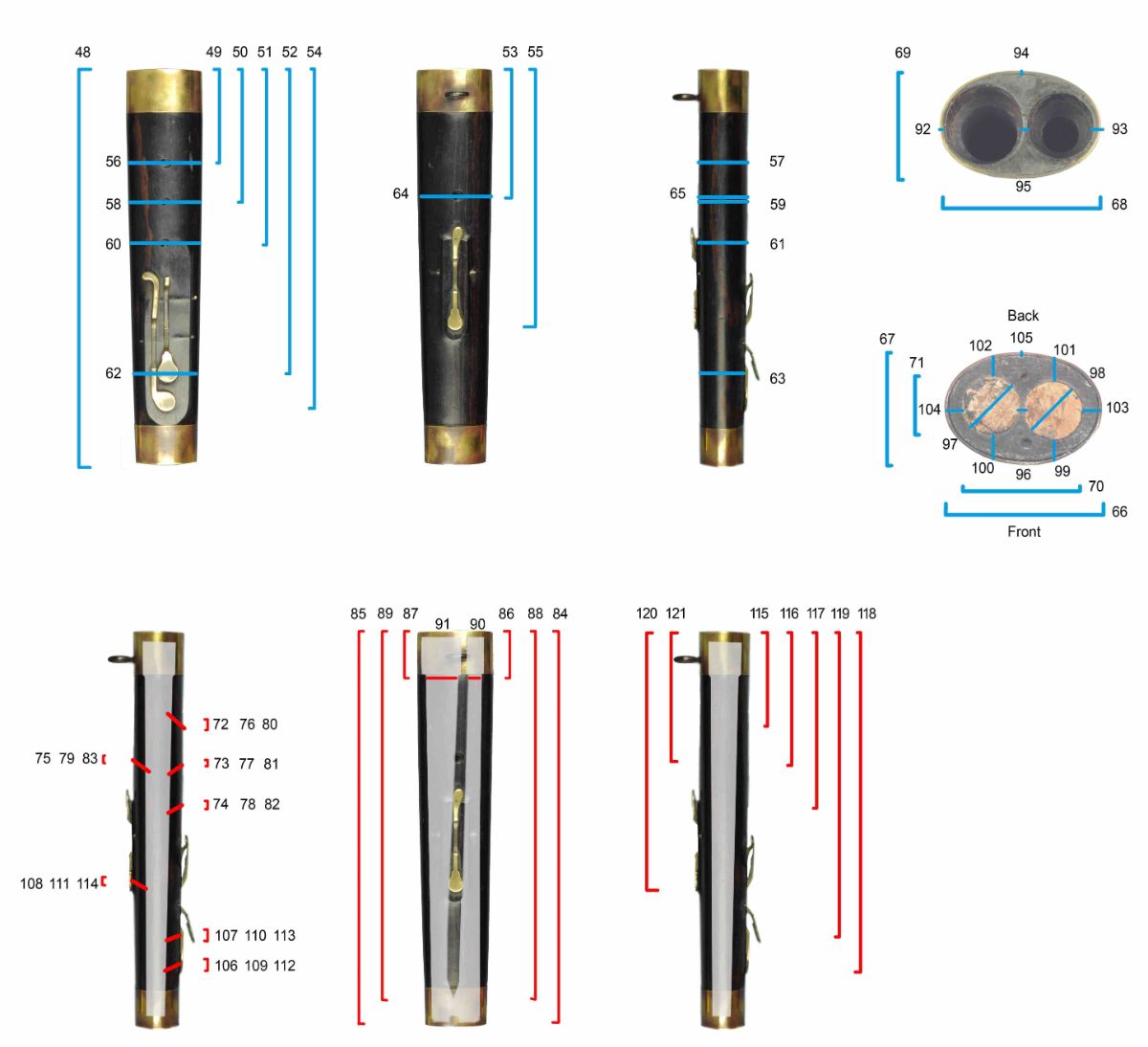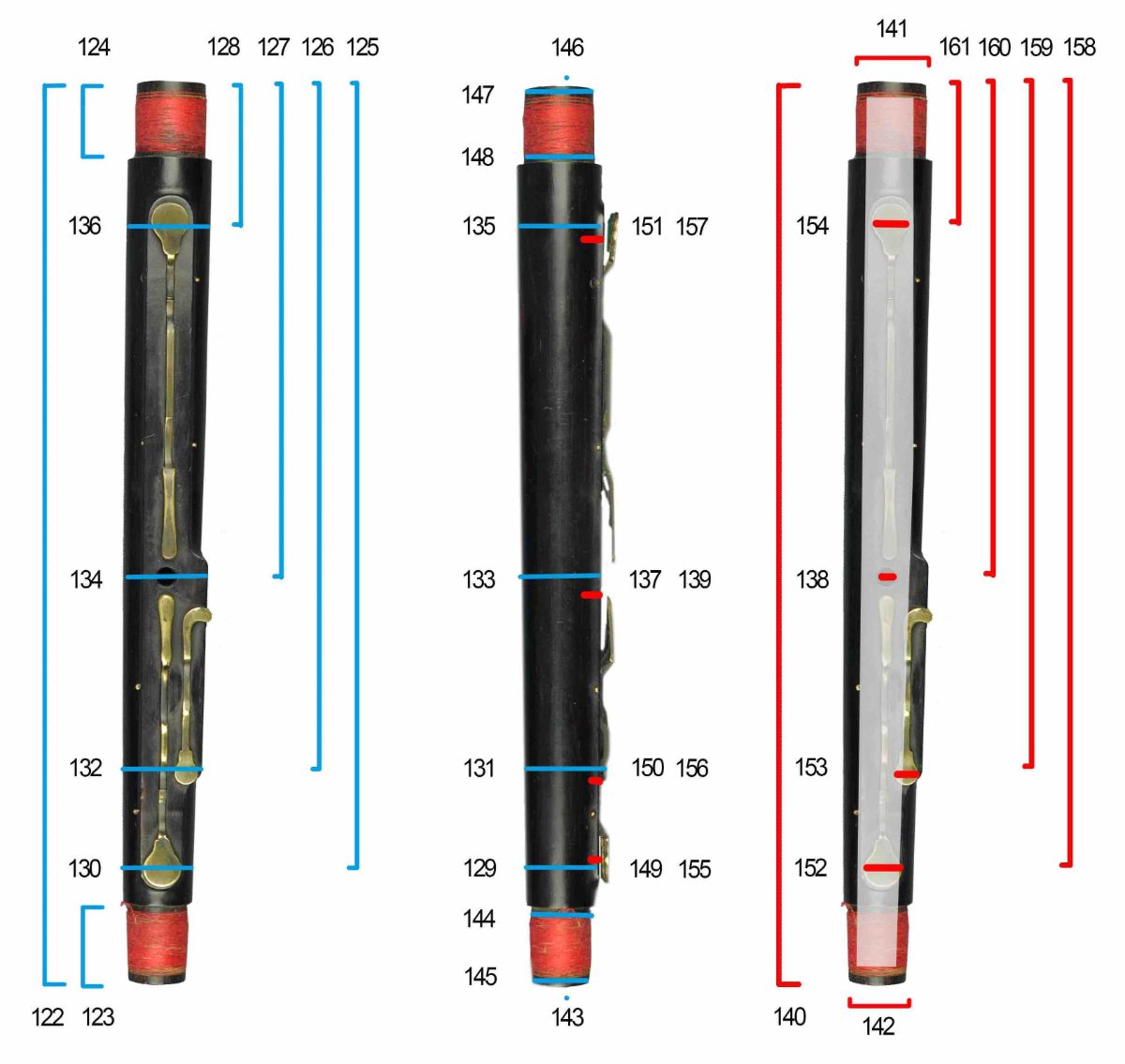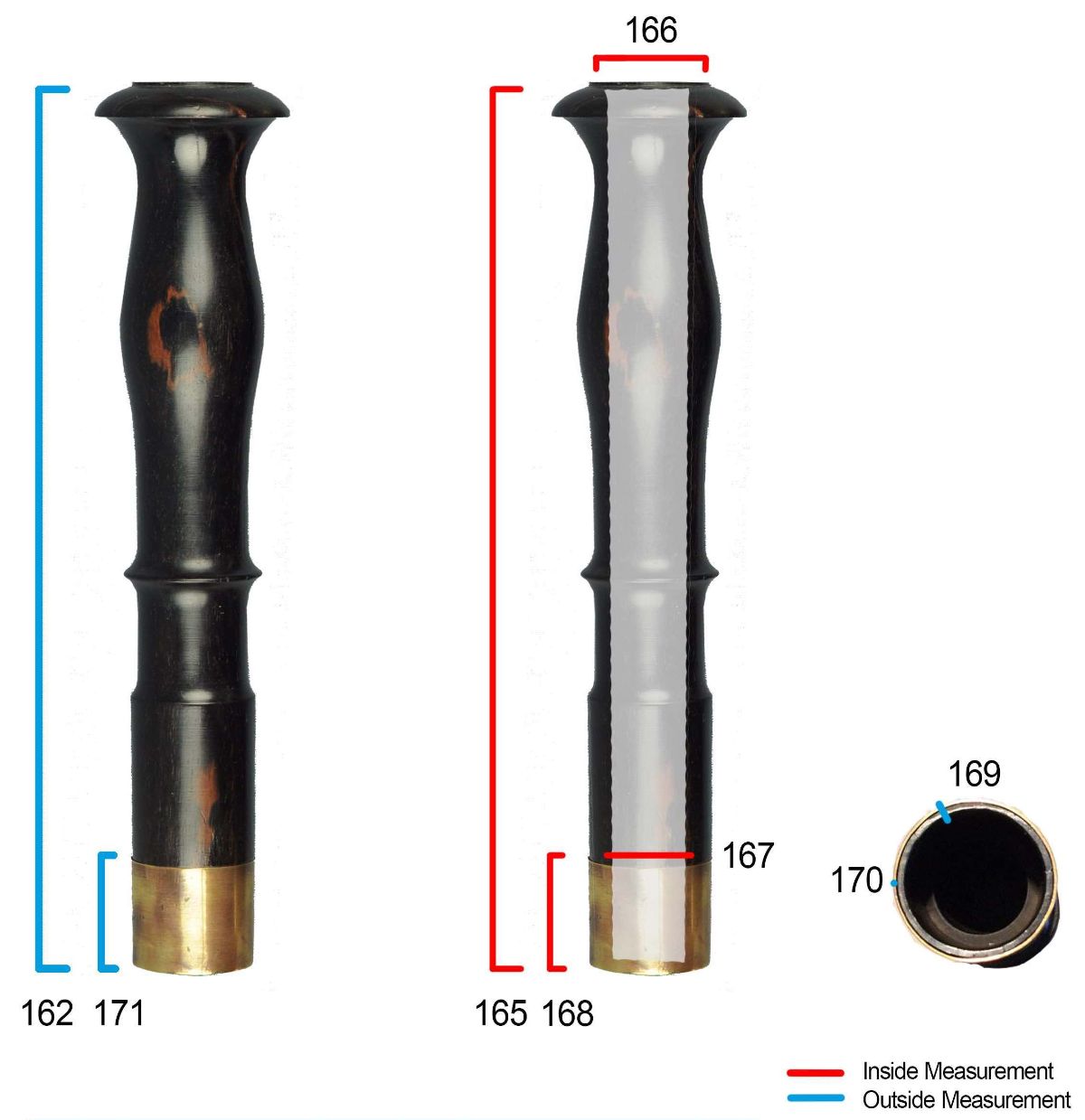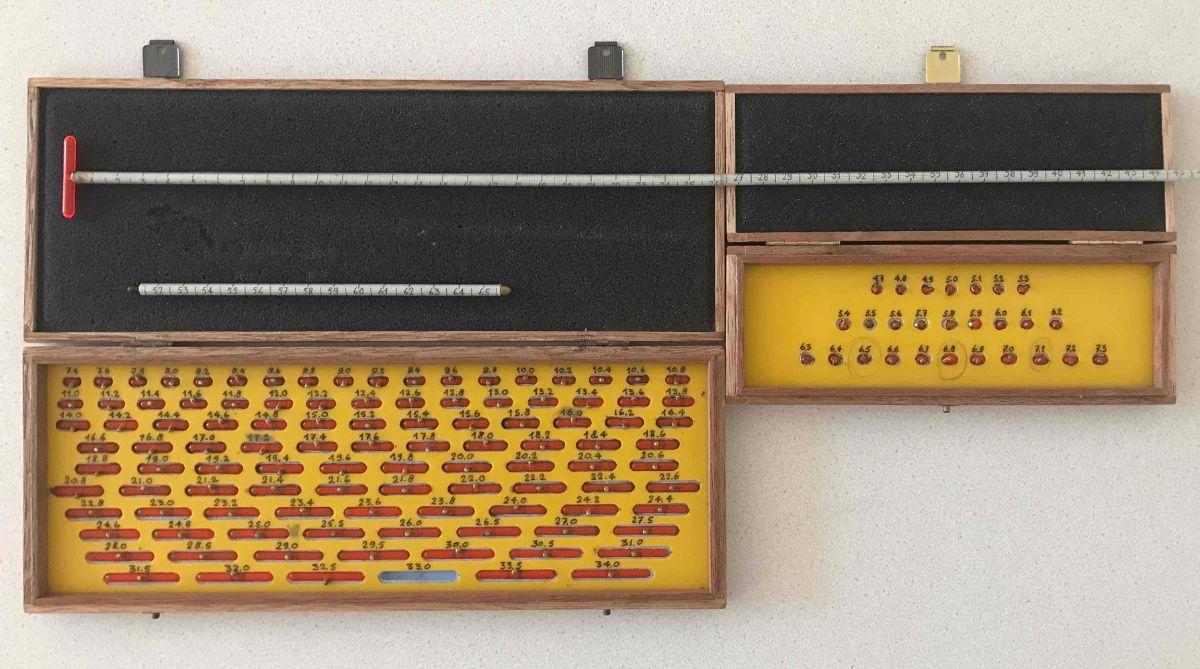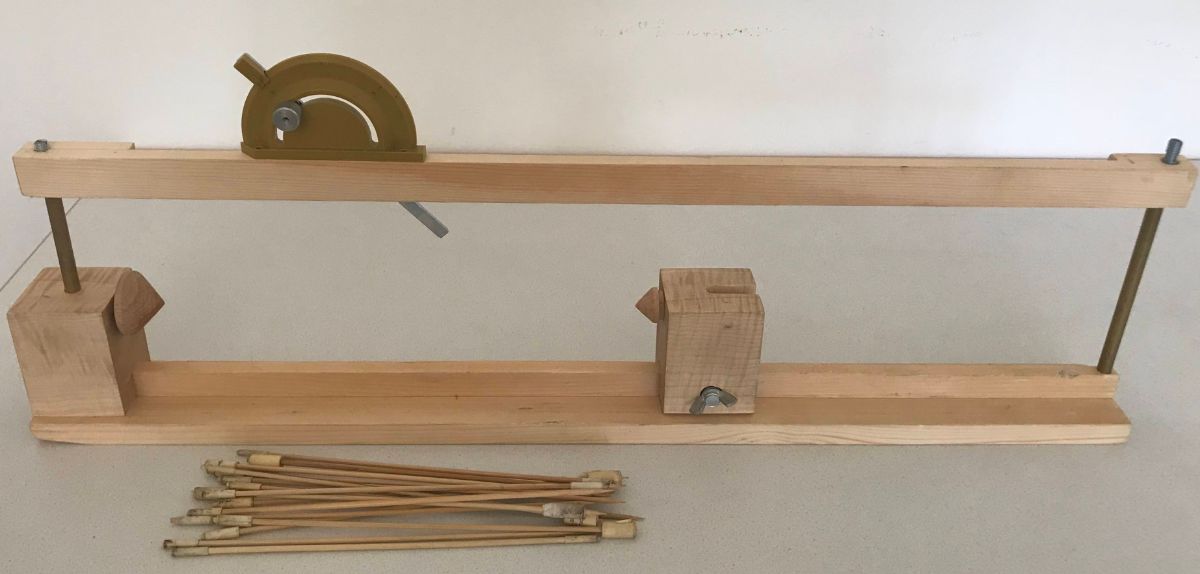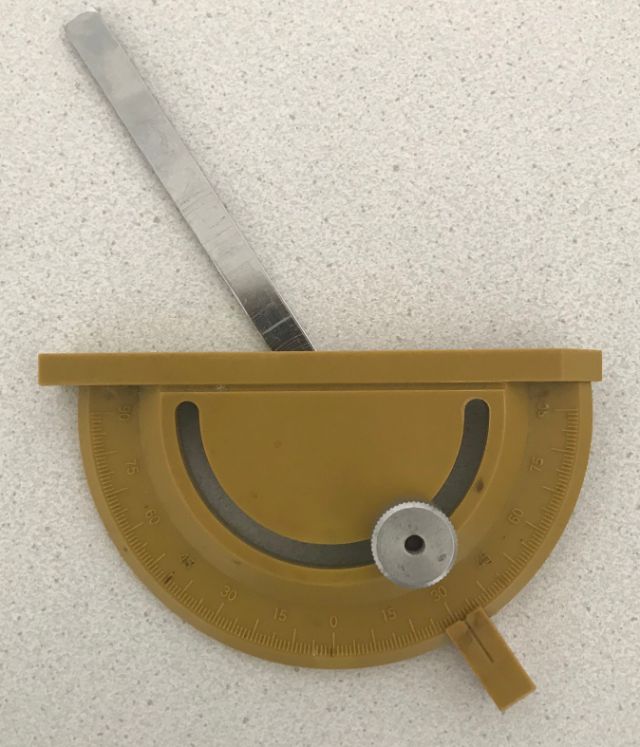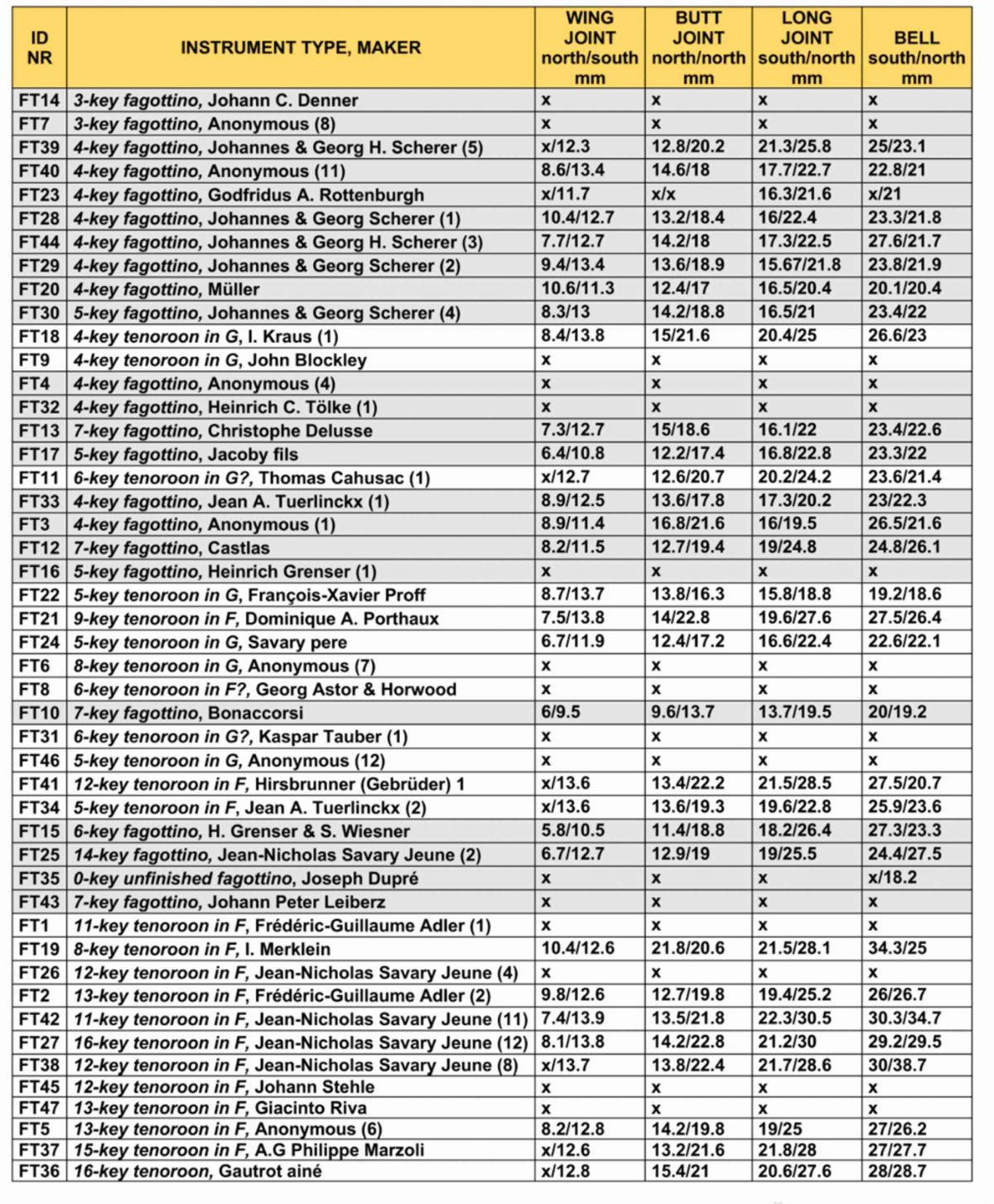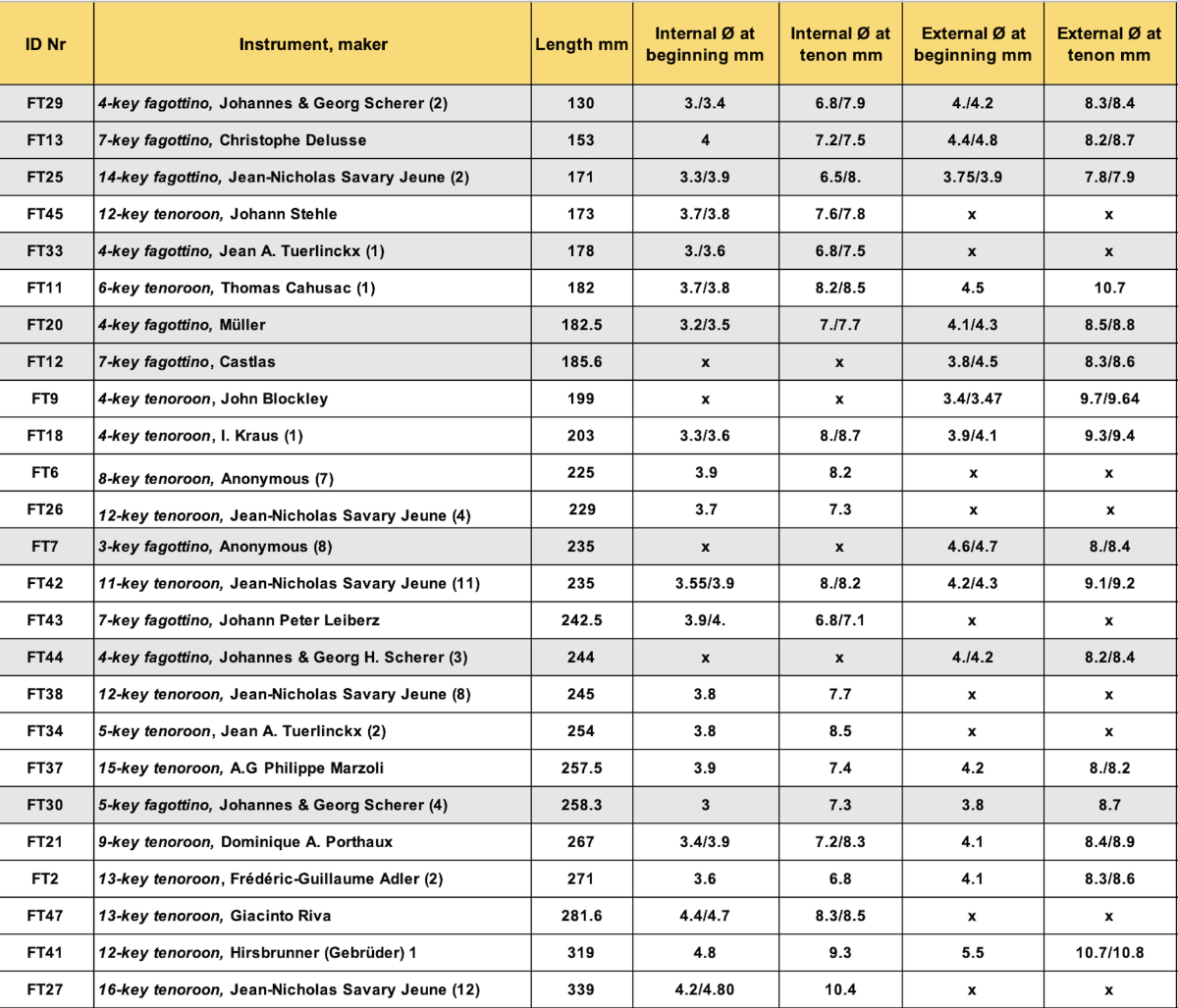Introduction
In the scope of two SNSF research projects “Fagottini and tenoroons – Small forgotten giants” and “Out of the bass register”, an instrument catalogue listing approximately 130 extant small-sized bassoons has been created, augmented by more than 60 datasets containing detailed measurements, inner bore dimensions, descriptions, photographic/video material, and information of particular interest to instrument builders. Critical points also include tone hole dimensions and angles. The compiled datasets enable numerous comparisons of the different sizes of fagottino and tenoroons examined.
While manual measuring procedures are still the norm for most historical woodwind makers, data collection using sophisticated 3D-CT technology is increasingly preferred by many museums as outlined by the MUSICES project carried out by the Germanisches Nationalmuseum and the EZRT (Development Center for X-ray Technology) of the Fraunhofer Institute. [1]
3D-CT scanning of an instrument is, however, not always a viable option. A special climate-controlled transportation case is required and removing the instrument from its regulated environment is a costly and time-consuming undertaking; some curators, however, permit a careful investigation on site.
Four models (two from private Swiss collections and two from museums in Zürich and Berlin) were procured for scanning, printing, and subsequent reconstructions of four selected models for trials carried out within the second SNF project. It was additionally possible to collect a substantial amount of measurement data of many more small bassoons using the manual procedures described in this article. This data, in turn, can serve as a preliminary basis for future reconstructions of models built in a conventional manner. Please see our website www.historical-bassoon.ch for further details.


